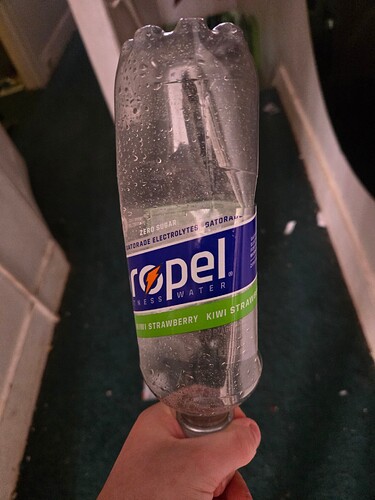How many fuckin items…
alot of items
The different types of text
Normal
Italic
Bold
Bold Italic
Big Normal
Big Italic
Big Bold
Big Bold Italic
Small Normal
Small Italic
Small Bold
Small Bold Italic
also this for some reason
Which dumbass changed everything? The owner of the post.
Hundreds of items are soon dropped.
Im also going to get shots at 3:00
ok
I currently know how to do the following things:
@discobot start {name-of-tutorial}
Starts an interactive tutorial just for you, in a personal message.
{name-of-tutorial}can be one of:tutorial, advanced tutorial.
@discobot roll 2d6
3, 6
@discobot quote
Science is organized knowledge. Wisdom is organized life. — Immanuel Kant
@discobot fortune
You may rely on it
A master boot record (MBR) is a type of boot sector in the first block of partitioned computer mass storage devices like fixed disks or removable drives intended for use with IBM PC-compatible systems and beyond. The concept of MBRs was publicly introduced in 1983 with PC DOS 2.0.
The MBR holds the information on how the disc’s sectors (A.K.A. “blocks”) are divided into partitions, each partition notionally containing a file system. The MBR also contains executable code to function as a loader for the installed operating system—usually by passing control over to the loader’s second stage, or in conjunction with each partition’s volume boot record (VBR). This MBR code is usually referred to as a boot loader.
The organization of the partition table in the MBR limits the maximum addressable storage space of a partitioned disk to 2 TiB (232 × 512 bytes).[1] Approaches to slightly raise this limit utilizing 32-bit arithmetic or 4096-byte sectors are not officially supported, as they fatally break compatibility with existing boot loaders, most MBR-compliant operating systems and associated system tools, and may cause serious data corruption when used outside of narrowly controlled system environments. Therefore, the MBR-based partitioning scheme has been superseded by the GUID Partition Table (GPT) scheme in almost all new computers. A GPT can coexist with an MBR in order to provide some limited form of backward compatibility for older systems.
MBRs are not present on non-partitioned media such as floppies, superfloppies or other storage devices configured to behave as such, nor are they necessarily present on drives used in non-PC platforms.
The GUID Partition Table (GPT) is a standard for the layout of partition tables of a physical computer storage device, such as a hard disk drive or solid-state drive. It is part of the Unified Extensible Firmware Interface (UEFI) standard.
It has several advantages over master boot record (MBR) partition tables, such as support for more than four primary partitions and 64-bit rather than 32-bit logical block addresses (LBA) for blocks on a storage device. The larger LBA size supports larger disks.
Some BIOSes support GPT partition tables as well as MBR partition tables, in order to support larger disks than MBR partition tables can support.
GPT uses universally unique identifiers (UUIDs), which are also known as globally unique identifiers (GUIDs), to identify partitions and partition types.
All modern personal computer operating systems support GPT. Some, including macOS and Microsoft Windows on the x86 architecture, support booting from GPT partitions only on systems with EFI firmware, but FreeBSD and most Linux distributions can boot from GPT partitions on systems with either the BIOS or the EFI firmware interface.
History
The Master Boot Record (MBR) partitioning scheme, widely used since the early 1980s, had limitations when it came to modern hardware. The available size for block addresses and related information is limited to 32 bits. For hard disks with 512‑byte sectors, the MBR partition table entries allow a maximum size of 2 TiB (2³² × 512‑bytes) or 2.20 TB (2.20 × 10¹² bytes).
In the late 1990s, Intel developed a new partition table format as part of what eventually became the Unified Extensible Firmware Interface (UEFI). The GUID Partition Table is specified in chapter 5 of the UEFI 2.11 specification.: 111 GPT uses 64 bits for logical block addresses, allowing a maximum disk size of 264 sectors. For disks with 512‑byte sectors, the maximum size is 8 ZiB (264 × 512‑bytes) or 9.44 ZB (9.44 × 10²¹ bytes) For disks with 4,096‑byte sectors the maximum size is 64 ZiB (264 × 4,096‑bytes) or 75.6 ZB (75.6 × 10²¹ bytes).
In 2010, hard-disk manufacturers introduced drives with 4,096‑byte sectors (Advanced Format). For compatibility with legacy hardware and software, those drives include an emulation technology (512e) that presents 512‑byte sectors to the entity accessing the hard drive, despite their underlying 4,096‑byte physical sectors. Performance could be degraded on write operations, when the drive is forced to perform two read-modify-write operations to satisfy a single misaligned 4,096‑byte write operation. Since April 2014, enterprise-class drives without emulation technology (4K native) have been available on the market.
Readiness of the support for 4 KB logical sectors within operating systems differs among their types, vendors and versions. For example, Microsoft Windows supports 4K native drives since Windows 8 and Windows Server 2012 (both released in 2012) in UEFI.
